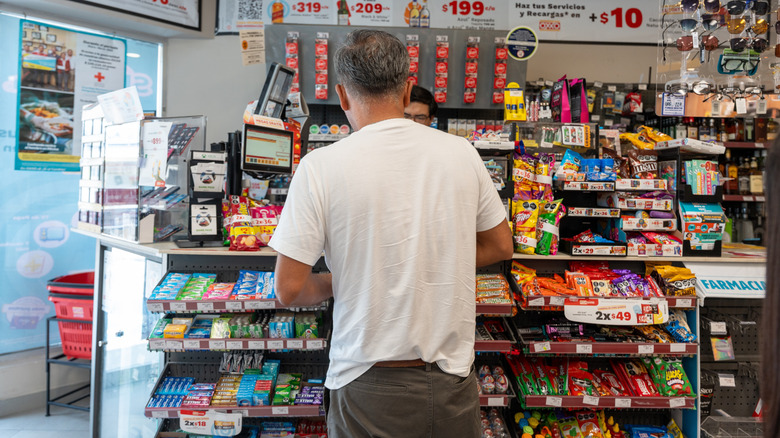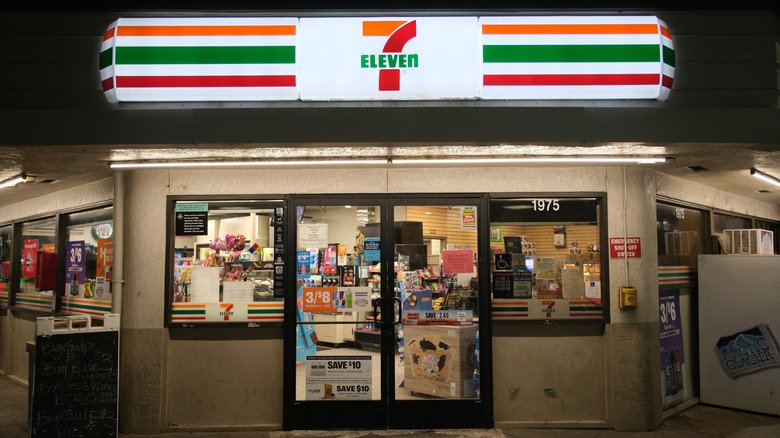From Ice Blocks To Snack Aisles — The First US Convenience Store Has Come A Long Way
Now with over 9,000 locations in the United States alone, the story of how the first U.S. convenience store got its start proves that even small steps can grow into giant success. If you're thinking of 7-Eleven, you're correct. While 7-Eleven is now where you'll find the best iced coffee and a wide variety of snacks, in 1927, it was just starting out and hadn't gotten its name yet. In Dallas, Texas, the Southland Ice Dock was run by Jefferson Green and sold large freezing blocks for people to use to refrigerate their food. During this time, shoppers would often need to head to several different stores to get meat, other groceries, general home goods, and, of course, ice. The hours were often limited as well, making grocery shopping more of a chore than it is today.
Green realized that the Ice Dock was already open for what back then was considered longer hours, a staggering 16 hours a day, seven days a week. He came up with the idea to sell bread and eggs there as well. When the Southland Ice Company caught word of Green's idea, the company decided to join forces. Several locations were opened up with this new business model and stayed open during the hours of 7 a.m. to 11 p.m. The name 7-Eleven, as we know it today, was born from these hours. The convenience of ice and a few groceries in one location did well to serve the clientele of its time; however, over the years, convenience stores became more, well, convenient with the 24-hour model, which 7-Eleven wouldn't introduce until over 35 years later. It wasn't the first 24-hour store in the U.S., though.
The rise and decline of 24-hour convenience stores
7-Eleven opened its first 24-hour location after one store was so busy throughout the night that the employees couldn't close. The convenience store wasn't the first to serve the midnight crowd, however. Stores that stayed open all night and day were becoming more prevalent to cater to people with varying schedules and lifestyles. As Americans' work schedules varied from 9 to 5, swing shift, or graveyard, the need for more accessible stores grew. Convenience stores are also great in a pinch when one needs caffeine for a road trip, windshield wipers for their car, or even some Tums when nowhere else is open to sell them. Before you go planning your next road trip around these convenience stores, though, know that the rise of 24-hour stores is over, and we're currently on the decline.
During the COVID-19 pandemic, retailers, including convenience stores, needed to close entirely or cut their hours of operation. As restrictions lifted, fewer and fewer locations returned to their pre-pandemic hours due to a variety of reasons, ranging from a lack of employees to lower sales volume during night-shift hours and even crime. Convenience stores aren't the only operations that may have changed the hours in which they do business; many 24-hour diners may never come back as well. If the journey of 7-Eleven from Southland Ice Company to the mega corporation it is today proves anything, it's that convenience stores are a reflection of the country's current needs.

